Efficacy of different clinical assessment measures of hyperacusis: a systematic review
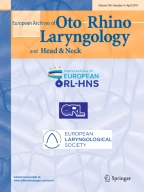
Hyperacusis is the hypersensitivity to auditory stimuli that would typically not affect those with hearing sensitivity within normal limits. The prevalence of hyperacusis in the general population has been estimated to range from 9% to 15%. There is no universally accepted definition for what defines hyperacusis among kindred illnesses of poor sound tolerance. As a result, hyperacusis prevalence varies more, which has an impact on both assessment and treatment. This study aims to determine the efficacy of the different clinical assessment measures of hyperacusis in assessing hyperacusis through a systematic review.
Methods
A review and reference of literature were done on hyperacusis, and assessment measures were used. A review of 23 articles was conducted to highlight these measures used. Most selected studies included retrospective, prospective, survey, and experimental designs. Study quality reported an overall low risk of bias.
Results
This review reports the summary and the current evidence of clinical assessment measures used for diagnosing hyperacusis.
Conclusions
This review highlights a protocol that may be used in the clinical diagnosis of hyperacusis. It also shows the necessity to standardize and validate assessment measures for the younger population.
This is a preview of subscription content, log in via an institution to check access.
Access this article
Subscribe and save
Springer+ Basic
€32.70 /Month
- Get 10 units per month
- Download Article/Chapter or eBook
- 1 Unit = 1 Article or 1 Chapter
- Cancel anytime
Buy Now
Price includes VAT (France)
Instant access to the full article PDF.
Rent this article via DeepDyve
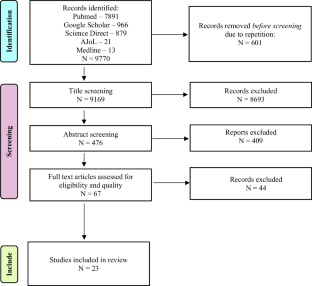
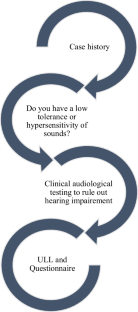
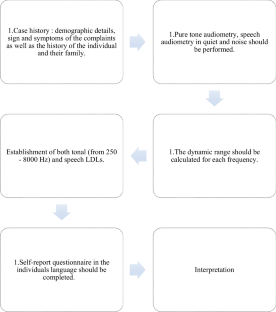
Similar content being viewed by others
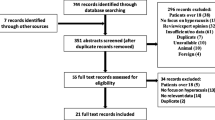
Hyperacusis in children: a scoping review
Article Open access 29 June 2020
Hyperacusis: major research questions
Article Open access 01 February 2018

Estimation of Prevalence of Hyperacusis in High School Students of Mysore District
Article 25 March 2024
Data availability
Materials and/or code availability
References
- Aazh H, Moore BCJ, Lammaing K, Cropley M (2016) Tinnitus and hyperacusis therapy in a UK National Health Service audiology department: patients’ evaluations of the effectiveness of treatments. Int J Audiol 55(9):514–522. https://doi.org/10.1080/14992027.2016.1178400ArticleGoogle Scholar
- Vernon J (1987) Pathophysiology of tinnitus: a special case—hyperacusis and a proposed treatment——PubMed [Internet]. https://pubmed.ncbi.nlm.nih.gov/3631220/. Accessed 29 Jun 2022
- Klein AJ, Armstrong BL, Greer MK, Brown FR (1990) Hyperacusis and otitis media in individuals with Williams Syndrome. J Speech Hear Disorders [Internet] 55(2):339–344. https://doi.org/10.1044/jshd.5502.339ArticleCASGoogle Scholar
- American Tinnitus Association (1989) Hyperacusis: a life altering supersensitivity to sound (brochure). [Internet]. https://www.thefreelibrary.com/Hyperacusis%3a+a+life-altering+supersensitivity+to+sound.-a011062902. Accessed 15 Jun 2022
- [Hyperacusis, phonophobia, and recruitment. Abnormal deviations of hearing associated with hypersensitivity to sound]—PubMed. 2003. https://pubmed.ncbi.nlm.nih.gov/14647932/. Accessed 15 Jun 2022
- Andersson G, Lindvall N, Hursti T, Carlbring P (2009) Hypersensitivity to sound (hyperacusis): a prevalence study conducted via the internet and post: Hipersensibilidad al sonido (hiperacusia): un estudio de prevalencia realizado por internet y por correo. Int J Audiol 41(8):545–554. https://doi.org/10.3109/14992020209056075ArticleGoogle Scholar
- Hall AJ, Humphriss R, Baguley DM, Parker M, Steer CD (2015) Prevalence and risk factors for reduced sound tolerance (hyperacusis) in children. Int J Audiol 55(3):135–141. https://doi.org/10.3109/14992027.2015.1092055ArticleGoogle Scholar
- Rosing SN, Schmidt JH, Wedderkopp N, Baguley DM (2016) Prevalence of tinnitus and hyperacusis in children and adolescents: a systematic review. BMJ Open [Internet]. 6(6):e010596 ArticleGoogle Scholar
- Jastreboff PJ, Jastreboff MM (2000) Tinnitus retraining therapy (TRT) as a method for treatment of tinnitus and hyperacusis patients. J Am Acad Audiol 11(3):162–177 ArticleCASGoogle Scholar
- Tinnitus Retraining Therapy: Implementing the Neurophysiological Model—Pawel J. Jastreboff, Jonathan W. P. Hazell - Google Books [Internet]. https://books.google.co.in/books?hl=en&lr=&id=weJtKjIYf3sC&oi=fnd&pg=PP1&dq=Jastreboff+PJ,+Hazell+JWP+(2004)&ots=nIUOK2iPs2&sig=rpwRgSbPSndB9gq7qWbDkhsQoMk#v=onepage&q&f=false. Accessed 29 Jun 2022
- Brandy WT, Lynn JM (1995) Audiologic findings in hyperacusic and nonhyperacusic subjects. Am J Audiol [Internet]. 4(1):46–51. https://doi.org/10.1044/1059-0889.0401.46ArticleGoogle Scholar
- Nelting M, Rienhoff NK, Hesse G, Lamparter U (2002) The assessment of subjective distress related to hyperacusis with a self-rating questionnaire on hypersensitivity to sound. Laryngorhinootologie [Internet]. 81(5):327–334 ArticleCASGoogle Scholar
- Page MJ, McKenzie JE, Bossuyt PM, Boutron I, Hoffmann TC, Mulrow CD et al (2021) The PRISMA 2020 statement: an updated guideline for reporting systematic reviews. BMJ [Internet]. 372:1 Google Scholar
- Aazh H, Moore BCJ (2017) Factors related to uncomfortable loudness levels for patients seen in a tinnitus and hyperacusis clinic. Int J Audiol 56(10):793–800 ArticleGoogle Scholar
- Aazh H, Moore BCJ (2018) Prevalence and characteristics of patients with severe hyperacusis among patients seen in a tinnitus and hyperacusis clinic. J Am Acad Audiol 29(7):626–633 ArticleGoogle Scholar
- Silva LAF, Kawahira RSH, Kim CA, Matas CG (2021) Auditory hypersensitivity in Williams syndrome. Int J Pediatr Otorhinolaryngol 1:146 Google Scholar
- Aazh H, Baguley DM, Moore BCJ (2019) Factors related to insomnia in adult patients with tinnitus and/or hyperacusis: an exploratory analysis. J Am Acad Audiol 30(9):802–809 ArticleGoogle Scholar
- Abouzari M, Tan D, Sarna B, Ghavami Y, Goshtasbi K, Parker EM et al (2020) Efficacy of multi-modal migraine prophylaxis therapy on hyperacusis patients. Ann Otol Rhinol Laryngol 129(5):421–427 ArticleGoogle Scholar
- Villaume K, Hasson D (2017) Health-relevant personality is associated with sensitivity to sound (hyperacusis). Scand J Psychol 58(2):158–169 ArticleGoogle Scholar
- Aazh H, Moore BCJ (2017) Incidence of discomfort during pure-tone audiometry and measurement of uncomfortable loudness levels among people seeking help for tinnitus and/or hyperacusis. Am J Audiol 26(3):226–232 ArticleGoogle Scholar
- Assi H, Moore RD, Ellemberg D, Hébert S (2018) Sensitivity to sounds in sport-related concussed athletes: a new clinical presentation of hyperacusis. Sci Rep 8(1):1–8 ArticleCASGoogle Scholar
- Jüris L, Ekselius L, Andersson G, Larsen HC (2013) The hyperacusis questionnaire, loudness discomfort levels, and the hospital anxiety and depression scale: a cross-sectional study. Hear Balance Commun 11(2):72–79 ArticleGoogle Scholar
- Blaesing L, Kroener-Herwig B (2012) Self-reported and behavioral sound avoidance in tinnitus and hyperacusis subjects, and association with anxiety ratings. Int J Audiol 51(8):611–617 ArticleGoogle Scholar
- Fackrell K, Fearnley C, Hoare DJ, Sereda M (2015) Hyperacusis questionnaire as a tool for measuring hypersensitivity to sound in a tinnitus research population. BioMed Res Int 2015:1–12 ArticleGoogle Scholar
- Prabhu P, Nagaraj MK (2020) Development and validation of Hyperacusis Handicap Questionnaire in individuals with tinnitus associated with hyperacusis. J Otol 15(4):124–128 ArticleGoogle Scholar
- Viziano A, Micarelli A, Alessandrini M (2017) Noise sensitivity and hyperacusis in patients affected by multiple chemical sensitivity. Int Arch Occup Environ Health 90(2):189–196 ArticleGoogle Scholar
- Anari M, Axelsson A, Eliasson A, Magnusson L (1999) Hypersensitivity to sound—questionnaire data, audiometry and classification. Scand Audiol [Internet]. 28(4):219–230 ArticleCASGoogle Scholar
- Aazh H, McFerran D, Moore BCJ (2018) Uncomfortable loudness levels among children and adolescents seeking help for tinnitus and/or hyperacusis. Int J Audiol 57(8):618–623 ArticleGoogle Scholar
- Baguley DM, Bartnik G, Kleinjung T, Savastano M, Hough EA (2013) Troublesome tinnitus in childhood and adolescence: data from expert centres. Int J Pediatr Otorhinolaryngol [Internet]. 77(2):248–251 ArticleGoogle Scholar
- Sheldrake J, Diehl PU, Schaette R (2015) Audiometric characteristics of hyperacusis patients. Front Neurol 6:105 ArticleGoogle Scholar
- Andersson G, Baguley D, McKenna L, McFerran D (2005) Tinnitus: a multidisciplinary approach, vol 211. Wiley, New York Google Scholar
- Hazell JWP, Sheldrake JB, Graham RL (2011) Decreased sound tolerance: predisposing factors, triggersand outcomes after TRT. In: Internationaltinnitus seminar, 7., 2002. Fremantle, Australia.Proceedings. Perth, Australia: The University of WesternAustralia, 2002. p. 255–261. Textbook of Tinnitus. 2011;1–785.
- Gold SL, Formby C; FEA, Suter C (2011) Shifts in loudness discomfort level in tinnitus patients with and without hyperacusis. Textbook of Tinnitus, pp 1–785
- Goldstein B, Shulman A (1996) Tinnitus-hyperacusis and loudness discomfort level test—a preliminary report. International Tinnitus J [Internet]. 1996;2:83–9. https://www.tinnitusjournal.com/articles/tinnitus--hyperacusis-and-the-loudness-discomfort-level-test--a-preliminary-report.pdf. Accessed 23 Jul 2022
- Knobel KAB, Ganz Sanchez T (2005) Nível de desconforto para sensação de intensidade em indivíduos com audição normal Loudness discomfort level in normal hearing individuals
- Greenberg B, Carlos M (2018) Psychometric properties and factor structure of a new scale to measure hyperacusis: Introducing the inventory of hyperacusis symptoms. Ear Hear 39(5):1025–1034 ArticleGoogle Scholar
- Khalfa S, Dubal S, Veuillet E, Perez-Diaz F, Jouvent R, Collet L (2002) Psychometric normalization of a hyperacusis questionnaire. ORL 64(6):436–442 ArticleCASGoogle Scholar
- Yilmaz S, Taş M, Bulut E, Nurçin E (2017) Assessment of reduced tolerance to sound (Hyperacusis) in University Students. Noise Health 87:73–78 Google Scholar
- Zaugg TL, Thielman EJ, Griest S, Henry JA (2016) Subjective reports of trouble tolerating sound in daily life versus loudness discomfort levels. Am J Audiol 25(4):359–363 ArticleGoogle Scholar
- Bläsing L, Goebel G, Roseneck SK, Kröner-Herwig B (2010) Hypersensitivity to sound in tinnitus patients: an analysis of a construct based on questionnaire and audiological data. Int J Audiol [Internet]. 49:518–526 ArticleGoogle Scholar
- Dauman R, Bouscau-Faure F (2005) Assessment and amelioration of hyperacusis in tinnitus patients. Acta Otolaryngol [Internet]. 125(5):503–509 ArticleGoogle Scholar
- Urnau D, Tochetto TM (2012) Occurrence and suppression effect of otoacoustic emissions in normal hearing adults with tinnitus and hyperacusis. Braz J Otorhinolaryngol 78(1):87–94 ArticleGoogle Scholar
Acknowledgements
The authors acknowledge with gratitude Prof. M Pushpavathi, Director, All India Institute of Speech and Hearing, Mysore affiliated to University of Mysore, for permitting to conduct the study at the institute.
Funding
This study was not supported by any funding, grant or other support.






